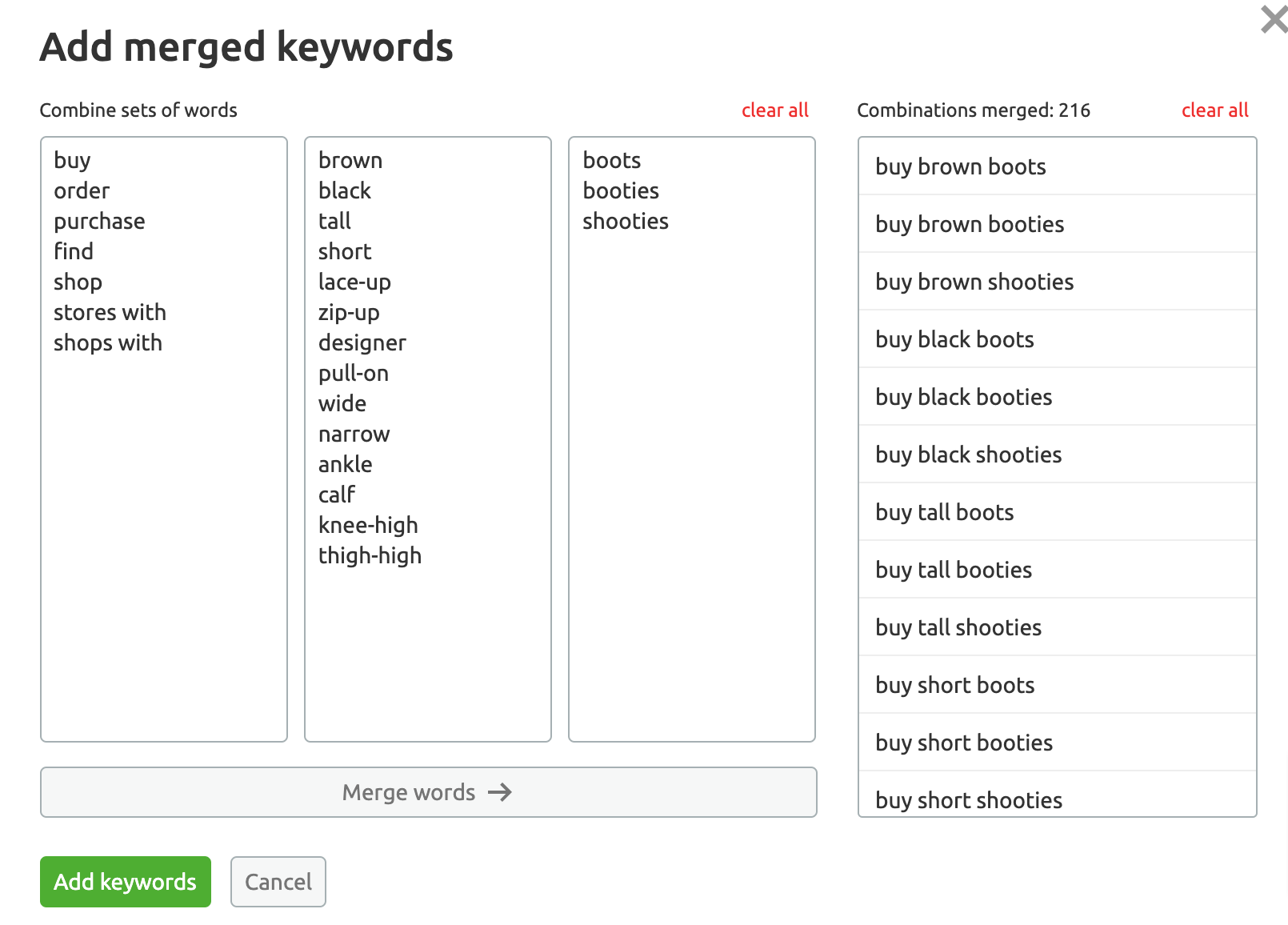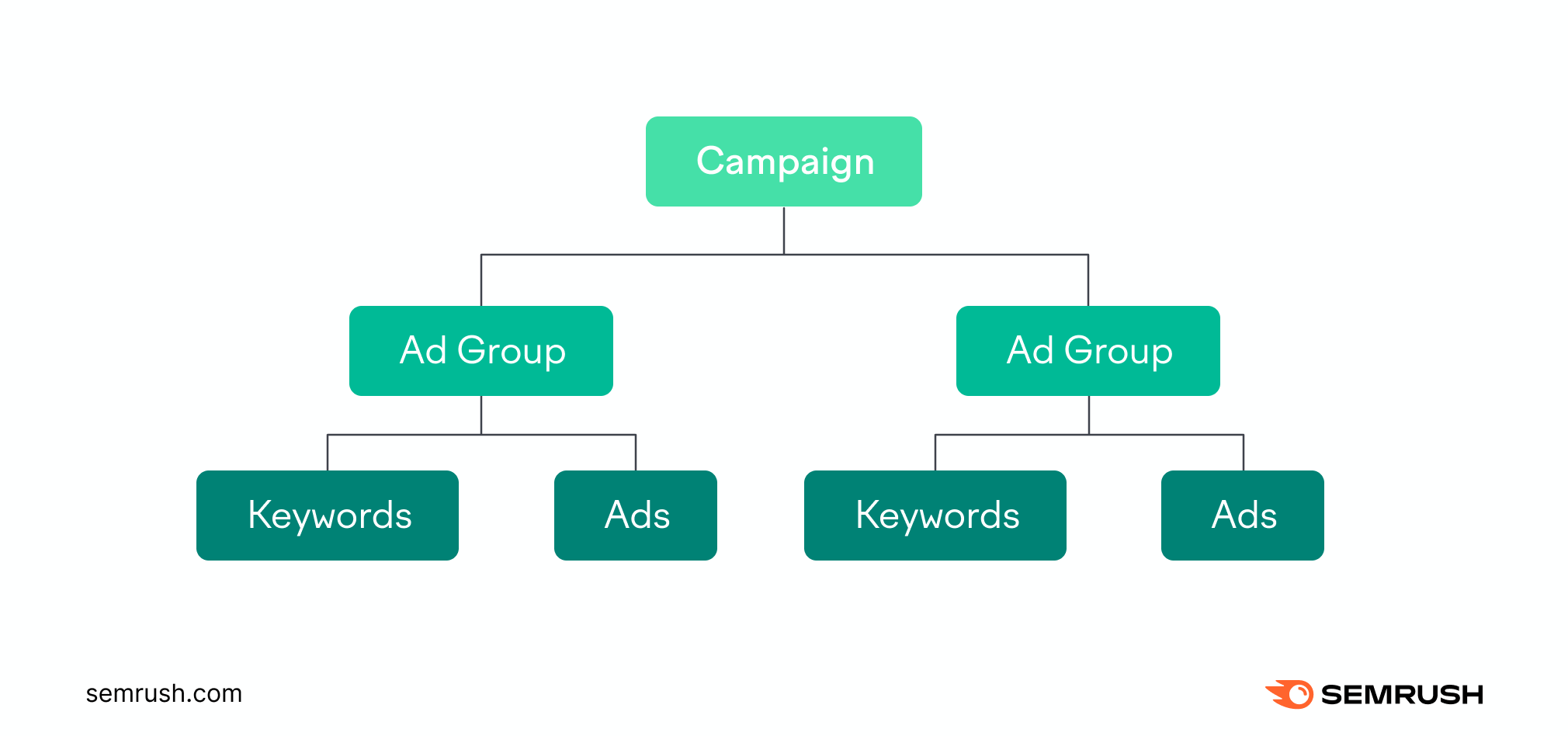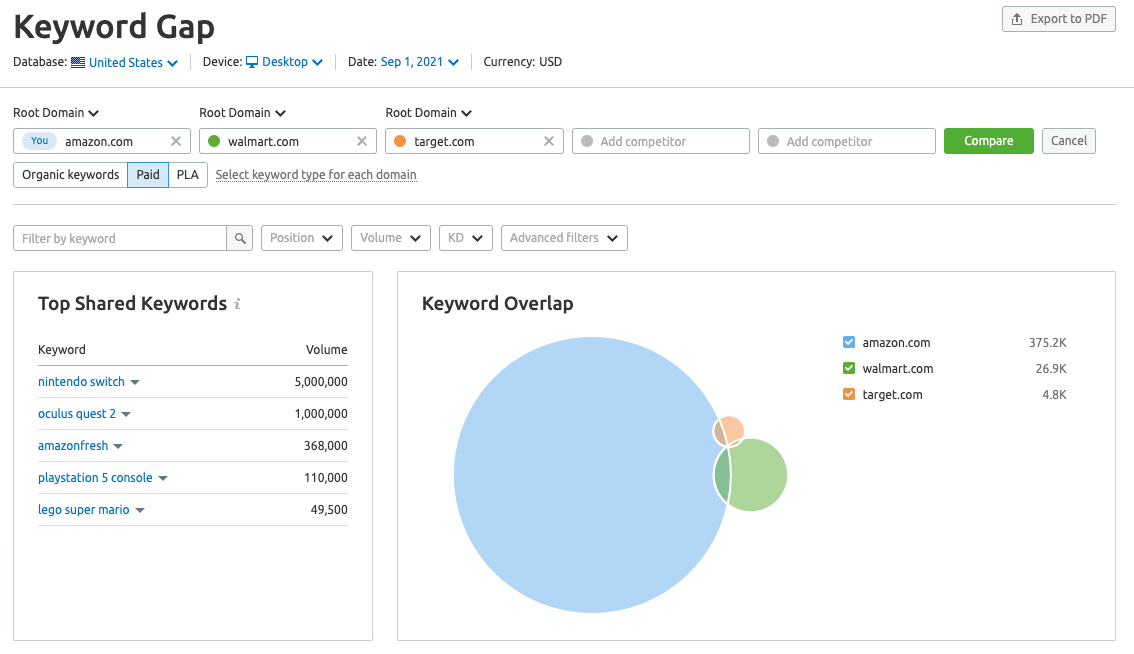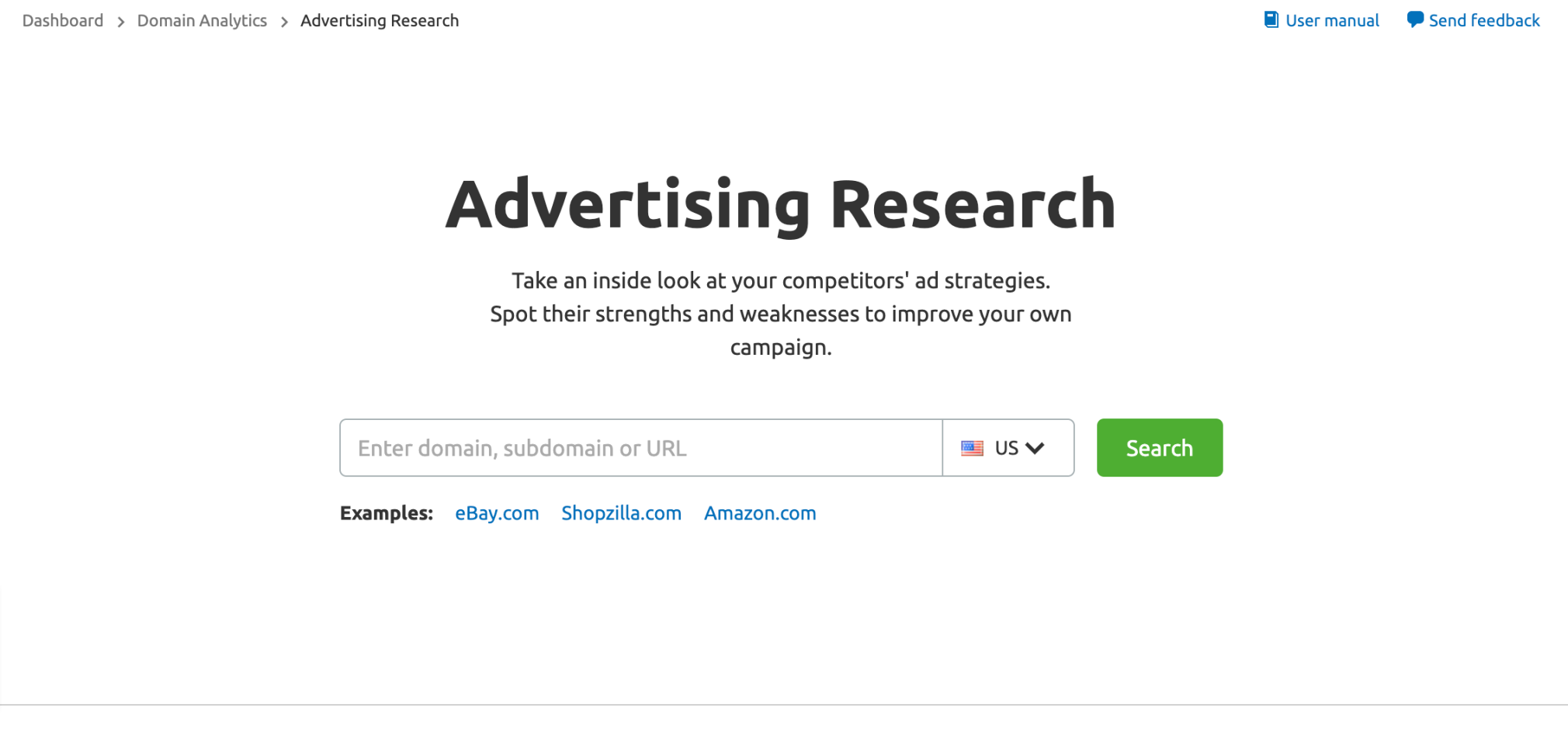Setting up a Google Ads campaign seems pretty straightforward and, for the most part, it is. There are some common pitfalls, however, that are easy to stumble over if you don’t know any better. In this post, I’ll talk about some of those common mistakes and how to avoid them for more profitable Google Ads campaigns.
1. Choosing Keywords That Aren't Aligned with Your Goals
The number one mistake that I see when auditing accounts is that new advertisers have chosen keywords that aren’t a good fit for their goals.
The tricky thing is that not all keywords that are relevant to your business are a good fit for your campaign, meaning that you need to be really selective even beyond relevance. Consider the intent of the person searching. While you can’t perfectly garner intent from a search term alone, you can look for indicators and qualifiers that are more likely to be a good match.
Here’s an example: if your business was a shoe store, then terms about shoes would be relevant to your business. You could bid on the word “shoes” and the keyword would technically be relevant but because there aren’t any qualifiers that indicate purchase intent, it’s probably a safe bet that it would spend a lot of money without driving much value in return.
A better keyword would be “buy shoes online” or “online shoe stores”. Another good keyword — possibly even better than the previously mentioned terms — would be something like “size 9 red high heels” because, even though it doesn’t mention “buy” or “purchase”, the search is very specific and clearly coming from someone who knows exactly what they need which tends to be the last step before completing a purchase.
As you build out your list of keywords, put yourself in the searcher’s shoes (pun intended) and consider what results or actions you’d be seeking if you were using the terms in your list. Look for ways to better qualify terms that appear to be more informational than transactional (unless your goal is higher funnel traffic).
The PPC Keyword Tool is very handy for identifying keywords. One of our favorite parts is the merged keyword tool. Using this, you can combine multiple variations of different terms to create a big list quickly and then get estimated data!

Another common mistake is optimizing toward things like CPCs or clicks and accidentally driving low-quality traffic because you don’t have better metrics in place to monitor.
The great thing about PPC is that you can monitor results in near-real-time. This only works if you have tracking set up, though.
Make sure you have conversions set up for any actions you want to track on site. Test the conversions and ensure they’re working properly. Additionally, make sure Google Analytics is set up and link your Google Analytics account to your Google Ads account.
3. Creating a Structure that Breeds Irrelevance or Inhibits Scale
I often audit accounts to find that advertisers have set up one ad group — or very few ad groups — in a single campaign. There are a few problems with this.
The first problem is that if you have large ad groups, there’s virtually no way that the ads in that ad group can be relevant to every single keyword in the ad group and relevance is key when it comes to paid search.
The second problem is that it inhibits scale. If you continue to add keywords in the future, it’ll make relevance issues even worse. Plus, if you want to add budget — but only to a certain category or product — you don’t have that ability.
Carefully planning your structure in advance can save you a headache in the long run. To do this, separate your campaigns based upon the way that you might want to budget.
For many companies, this follows a similar structure to that of their site. Take a look at your navigation and how you segment products or services — this can be a good starting point for identifying different campaign topics.
For instance, if you’re a clothing retailer, you would probably want different campaigns for women’s tops, women’s pants, and women’s shoes vs. men’s tops, men’s pants, and men’s shoes. In fact, you may even want to go as far as to separate on a more granular level such as women’s athletic tops vs. women’s blouses and so on.
Then, you need to segment your ad groups into tight-knit themes. You wouldn’t want to put tennis dresses and homecoming dresses in the same ad group because there’s no ad that would be relevant to both of those searches. Instead, you’d want smaller ad groups that would allow you to cater to specific searches with each ad.

4. Using All of Google’s Default Settings
This may be the very most common issue that I see: advertisers using all of Google’s default settings.
For instance, by default, Google includes the display network in any search campaign. I’ve never, ever seen this perform, well, ever in over 10 years of managing PPC campaigns.
Google also opts your advanced location targets into including traffic outside of your targeted locations if it appears that they *might* be interested in that location. This can also waste spend on prospects that you aren’t able to serve.
5. Using Broad Match Alone
This ties into the previous point since it is Google’s default, but it really warrants its own callout.
By default, when you add new keywords, they are added as broad match (the loosest match type). Most advertising experts use broad match sparingly, if at all.
Be selective about the match types that you use for each keyword based upon the context of the term and the type of queries that you would want it to match to.
6. Not Proactively Adding Negatives
As you perform keyword research and identify the types of terms that you want to target, also keep an eye out for terms that you know you definitely do not want to deliver for and add those as negative keywords.
You can also find lists of negative keywords online for inspiration. Terms like “job” and “jobs” can usually be negated for *most* advertisers.
Proactively adding negatives allows you to spare yourself some of the wasted spend that would’ve likely been used on those terms.
7. Missing the Mark on Ad Copy
Writing ad copy is harder than it looks. You might think that with such few characters it’d be easy to come up with copy, but the opposite is often true: It’s hard to draft meaningful, compelling copy that doesn’t use too many characters.
These are some of the most common mistakes that I see advertisers make when writing their ad copy:
Writing ad copy that isn’t relevant to every keyword in the ad group Writing about things their prospects don’t really care about Using too much space to say something that could’ve been written in a more concise manner Writing copy that blends in with what other advertisers are saying and lacks key differentiators Missing a strong call-to-action8. Not Setting Up Ad Tests
Not only is it important to craft compelling ad copy, but it’s also important to continuously test. While we can speculate what will work best, we never really know until we test it.
You’ll often be surprised by which copy elements perform best!
Make sure that you always have at least 2-3 ads in each ad group. I also recommend setting your ad rotation to ‘rotate indefinitely’ in the campaign settings to try to ensure that ads get an even distribution of impressions.
9. Not Taking Advantage of All of the Applicable Ad Extensions
On the topic of ad copy and testing, it’s a good idea to make sure that you have all applicable extensions in place.
Ad extensions provide further information and content about your brand and product, which could possibly give people more reason to click. Make sure that they aren’t redundant to the copy and that they’re compelling and that they complement the ad copy.
Utilizing ad extensions can help improve CTR by making the ad larger and taking up additional real estate while also providing more information.
10. Ignoring Your Competitors
Just because your competitors are doing something, doesn’t mean that it’s right or that it’s working — but it can be a good starting point for identifying gaps in your coverage and it can be helpful for brainstorming ideas!
It’s helpful to look at keywords you rank for as well as where your competitors stand.
It’s also important to look at their ads to make sure that you:
Aren’t saying the exact same thing! Understand what their offer is and what they view as their differentiators and value propositionsOur Keyword Gap Tool is useful for identifying gaps in keyword coverage. You can compare your current rankings against that of your competitors as well as research where you have overlapping keywords and where you have gaps.

The Advertising Research Tool is also handy. You can plug in a domain to get insights into their advertising efforts.

For example, you can see things like their keywords, their ad positions, their ad copy, landing pages, and more. These insights can help you identify strengths, weaknesses, and opportunities!

11. Focusing on the Wrong Goals
Last but certainly not least, as you’re creating your ad campaign, make sure that you’re focused on the right goal. Any old campaign can drive clicks but not just any campaign can drive qualified traffic that converts.
Think about your business goals, the marketing goals, and the way that this campaign is expected to support those goals. Use those goals as a guardrail and a lens throughout every step of the campaign creation process!
Key Takeaways
Set up tracking early on so that you have it from the get-go.
Set your goals as you plan your campaign. As you perform your keyword research, be sure to choose keywords that are not only relevant, but that indicate an intent that aligns with your goals. Also, be sure to proactively identify negative keywords.
Don’t take the default settings as a best practice; sometimes what is best for the search engines isn’t what’s best for the advertiser.
Last but not least, always be testing!
Setting up an account can be daunting but if you follow these steps, they’ll help you avoid the most common pitfalls.
Innovative SEO services
SEO is a patience game; no secret there. We`ll work with you to develop a Search strategy focused on producing increased traffic rankings in as early as 3-months.
A proven Allinclusive. SEO services for measuring, executing, and optimizing for Search Engine success. We say what we do and do what we say.
Our company as Semrush Agency Partner has designed a search engine optimization service that is both ethical and result-driven. We use the latest tools, strategies, and trends to help you move up in the search engines for the right keywords to get noticed by the right audience.
Today, you can schedule a Discovery call with us about your company needs.
Source:





